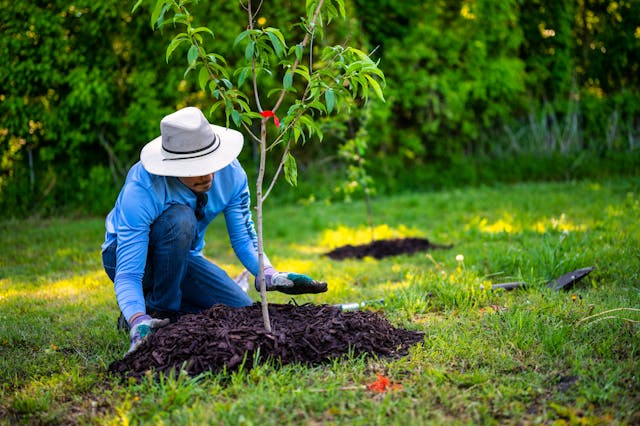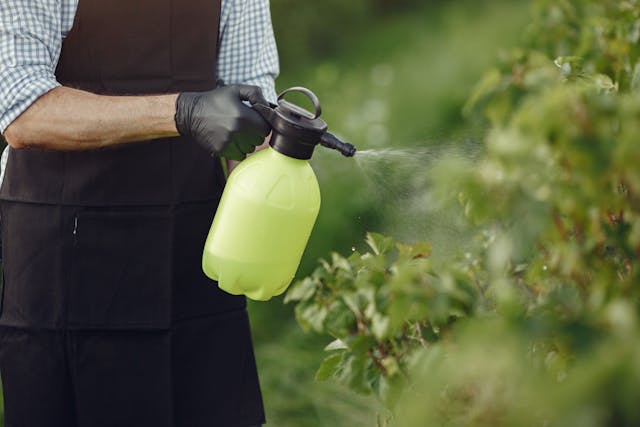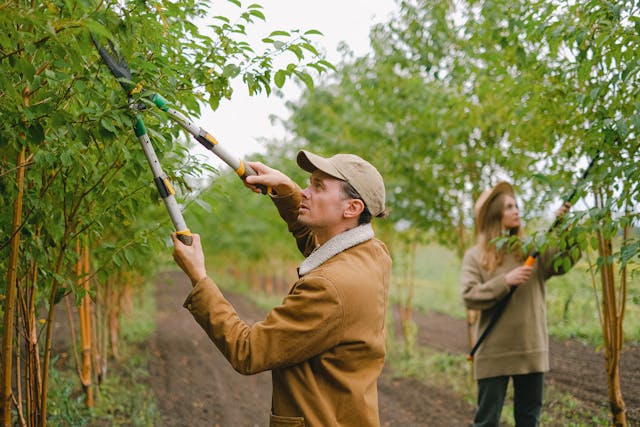- Taste-test fruits for ripeness to ensure harvesting at peak flavor, which is crucial for non-tree ripening fruits.
- Post-harvest, nourish trees with water, fertilizer, and light pruning to promote health for next year’s yield.
- Utilize orchard produce by exploring fresh eating, cooking, and preserving methods, sharing the bounty with others.
- Committing to a backyard orchard offers long-term rewards, blending science and art for a legacy of nature’s joy.
- Each season in orchard care offers new learning opportunities and growth, embodying a labor of love.
Imagine walking out your back door and strolling through your orchard, the mellow scent of ripe fruits hanging in the air, waiting for you to pluck them from the branches. The vision of a backyard brimming with fruit-bearing trees is idyllic and achievable with the right planning and care. Whether you’re a seasoned gardener or just beginning your horticultural adventure, a home orchard offers a vaunted return on investment – both gastronomically and environmentally. Here are vital pointers to guide you through the literal fruits of your labor.
Selecting the Right Fruit Trees
Before the first dig or planting of a single sapling, selecting the right fruit trees is crucial to your orchard’s success. It’s not just about personal taste; it’s also about understanding your local climate and ensuring that your chosen fruits will thrive in the conditions of your specific location.
Understanding Your Climate Zone
Fruit trees, much like people, have their climate preferences. Determining your USDA hardiness zone is the first step in selecting suitable fruit tree varieties for your backyard orchard. If blessed with a warm Mediterranean climate, lemons, figs, and pomegranates may be your best bet. Cooler, temperate areas can support apples, pears, and cherries. Subtropical locales can sustain avocados and citrus. For narrow spots or container growing, dwarf varieties are a space-saving solution.
Considering the Space Available
Fruit trees require not just horizontal space but also vertical. Consider each tree’s growth habit once you’ve chosen your zone-appropriate varieties. Some roots spread wide; others sink deep, so it’s vital to space your trees effectively. Also, factor in the shadow and sunlight patterns emerging as your orchard matures. Remember, a well-spaced tree has room to grow and promotes better air circulation, reducing disease risk.
Choosing Tree Varieties
The benefits of variety extend beyond taste. They offer a staggered harvest season, cross-pollination advantages for better fruit sets, and sometimes, even ornamental appeal. Engage with local nurseries for tree recommendations tailored to your region, ensuring your orchard has diverse flavors and ripening times.
Planting Your Trees
Planting the trees in your fledgling orchard balances timing and technique. Get it right, and your trees will have the robust start they need to bear bountiful harvests for years.

Timing and Seasonality
Ideal tree planting revolves around the dormant season when the tree’s energy is focused on root development. Early spring or late fall are prime times. This schedule encourages root growth before extreme heat or cold stressors arrive.
Preparing the Soil
The vitality of your orchard is rooted in the soil it stands on. Begin with a soil analysis to assess its pH and nutrient content. Most fruit trees thrive in slightly acidic soil conditions. To create an optimal setting for root development, enrich the soil with organic materials like compost or aged manure, ensuring the health and productivity of your orchard.
Planting Technique
The key to planting a fruit tree is doing it right first. Dig a hole wide enough to accommodate the roots without bending. Set the tree at the same level it grew in the nursery. Backfill with soil, tamping gently to eliminate air pockets. Water thoroughly to settle the soil, then mulch around the base to retain moisture and deter weeds.
Tree Care
Your commitment to tree care is the backbone of your orchard’s success. Regular watering, the right fertilizer, and strategic pruning are the hallmarks of a healthy orchard. Hiring a reputable tree care expert is also a wise investment to keep your trees in top condition. They can spot and diagnose diseases and pests early, preventing larger problems.
Regular Watering and Fertilization
Establish a watering schedule, considering that different trees have different water needs. Newly planted trees require more frequent watering to help their roots establish. Fertilize in the spring with a balanced blend, adjusting the dosage based on the tree’s age and soil quality.

Pruning for Health and Productivity
Assess your trees for disease, damage, and shaping needs each year. Pruning encourages strong branch structure, adequate sunlight penetration, and improved air circulation. Remove dead or diseased wood and branches that cross or rub against each other.
Pest and Disease Management
An integral part of orchard care is staying vigilant against pests and diseases. Regularly check for signs of infestation or illness and be prepared to take immediate action. Employ integrated pest management (IPM) techniques for prevention and the least toxic control methods.
Mulching and Weed Control
Mulching smothers weeds, helps retain soil moisture, and moderates ground temperature. Organic mulches, like wood chips or straw, gradually enrich the soil as they decompose. Regular weeding is essential, as weeds compete for nutrients and water with your fruit trees.
Harvesting and Beyond
The lifecycle of an orchard culminates in harvest, but the work doesn’t end there. Knowing when and how to pick, post-harvest care, and making the most of your bounty are all steps in the orchard owner’s manual.
Knowing When to Harvest
The best indicator of ripeness for most fruits is flavor. Taste-test a sample to determine if the fruit is ready for picking. This judgment will help you pick the peak of flavor, which is especially important for fruits that don’t ripen off the tree.
Post-Harvest Care
Following the harvest, ensure your trees are well-nourished for the next season. Water and fertilize post-harvest and consider a light pruning if necessary. This post-harvest care contributes to tree health, producing a more abundant harvest the following year.
Utilizing Your Orchard’s Bounty
An orchard’s joy lies in how its harvest can be enjoyed. There are countless ways to use your homegrown fruits, from fresh eating to creating preserves, pies, and juices. Explore recipes, experiment with cooking and preserving methods, and perhaps even share with friends and family.
Conclusion
Starting a backyard orchard is a long-term commitment, but the rewards are immense. The process is as much a science as an art, requiring patience, lifelong learning, and a touch of green-thumb intuition. By following the essential tips above, you’re not merely planting trees; you’re cultivating a rich legacy that will provide a haven for nature in your backyard and a source of endless enjoyment at your table. Remember, a thriving orchard is a labor of love, and each season brings new lessons and chances for growth. Happy planting!

